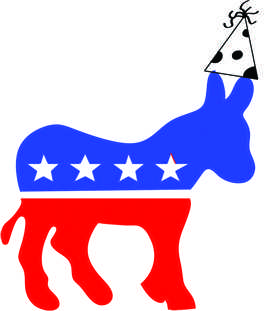Youth trends are almost always scrutinized, and youth culture remains an enduring staple of headline material. From internet behavior to social differences, we’ve received pity and disdain from previous generations.
Despite the comic frequency with which we’ve been criticized for adolescent apathy, members of our generation are now hailed as changemakers. And it’s true that we’ve engaged in great performances of passion: The Washington Post estimated than over 10,000 high school students participated in high school walkouts to protest gun violence, and USA Today estimated that these students came from about 2,800 schools.
While students are participating in more protests and arts activities, the effect of these are hard to measure. If activism devolves into a celebration of opinions that are trendy and fashionable instead of groups working to achieve something; if marches and protests become so broad that they lose focus and aren’t moving towards any goal accept attending said event; if individual opinions and voices are sacrificed for the fun and unity of a group social gathering — youth activism may become little more than a new, thrilling pastime, and an excuse to join together on a free Saturday: a political party, if you will.
Fred Clark takes credit for the creation of the word “slacktivism” in 1995. The original meaning was an appreciation for the simpler, less-flashy ways a person can help politically: signing petitions, organizing small-scale events, or talking to very local representatives. The idea was to make politics accessible.
More than twenty years later, “slacktivism” is a criticism of social media politics and modern action: in a nation more polarized than ever before (at least according to Politico, NPR, The Atlantic, and others) the slacktivism pitfall would be to accept a commonly held idea and vocally support it from within a comfortable echo chamber. Few people find time to thoroughly understand each political issue, and it’s far easier to join a group than maintain a nuanced stance.
The consequences are cumulative and eventually catastrophic: if decisions are made by choosing emotional bonds over intellectual merit of different arguments, credibility crumbles and reconciliation of opposing liberal and conservative groups becomes nearly impossible.
Protests are not inherently bad and social media is not inherently evil. Americans have celebrated their first amendment for generations. Civil rights marches brought light to national issues, and people filled the streets to protest the most recent foreign wars and occupy Wall Street. Marches have served to unite a discontent populace and renew faith in the American people. “This is what democracy looks like!” protesters chanted recently. Despite the human element and enthusiasm, protests themselves simply are not enough. (A cautionary note on the impacts of marches alone: we are still fighting in Afghanistan and a sparse few CEOs were indicted for their involvement in the stock market crash of 2008).
But this is not the end. Don’t recycle your clever handmade sign yet; don’t stop talking to your friends about politics. This is not the time to embrace the futile feeling of protests, but to
take it one step further.
Explore the nuances in issues and solutions: we need not be the generation to march the streets with two opposing three-word chants, but a symphony of different voices and sometimes-dissonant opinions to find our best attempt at one solution. To change the world for the better doesn’t require good lighting or one shared opinion. To work towards a goal, call representatives, encourage our generation to preregister and actually vote (49 percent of eligible millennials reported voting in 2016, according to the Pew Research institute).
To be the generation that brings change, we must work towards change. It’s possible. We must keep goals in mind and focus on the better world we hope to achieve and the most concrete steps required to get there.
That said, there’s nothing wrong with a good protest. Out of the ways to spend a few hours on a weekend or weekday, it’s important to fight apathy and encourage people to consider their values. At their best, marches and protests stir an apathetic populace from slumber to rise up and support the downtrodden, resisting the corrupt. We can unite under shared values and salvage an American identity when it’s needed most. Hopefully, we can channel this energy into voting and concrete action. But in the meantime, let’s pick up our signs and move forward.


